|
|||||||||
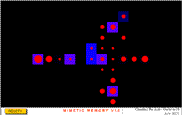
|
|||||
| Mimetic Memory | Flash | Aug 2001 | ||||
Mimetic Memory mimics memory by using principles of neural networks. When you move your mouse over the screen, you activate "cells" causing them to light up. These cells can also learn to activate neighboring cells that the mouse has rolled over. In this way, all the cells on the screen can learn to mimic your previous mouse movements. However, these patterns are not stored in any single location but are dispersed throughout the many cells. |
|||||
|
|
Back to top | ||||
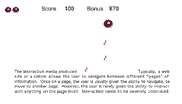
|
|||||
| Text Invaders | Shockwave | Feb 2000 | ||||
Combining the act of reading with the classic game of space invaders, this project deals with the differences between text and interactive media and explores the reasons why people often click through websites rather than reading them. At the same time that the text discusses these issues, the game demonstrates, creating a parallel between the content of the work and the user's experience. |
|||||
|
|
Back to top | ||||
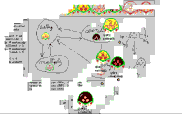
|
|||||
| Reactive Ecology
(aka Version 1.0) |
Java Applet | Sept 1998 | ||||
In this project (which could be called a game except that there is no way to win or lose), you can "scratch off" the surface of the screen to reveal information about both the design of and the current state of the project. However, simulated organisms come along to cover up your discoveries. Worse yet, they feed off the "erasure areas" that allow you to reveal the information beneath. Thus, the more you of the screen that you clear up, the faster the organism reproduce . Do nothing and they will starve and become all but extinct, but you won't be able to see much of what is beneath. In this way a self-regulating system is created. You can always reveal at least part of the screen but you can never reveal the entire screen at once. Included by the new media art journal Switch in their Web Art Taxonomy back when the project had the more self-reflexive title of "Version 1.0". |
|||||
|
|
Back to top | ||||
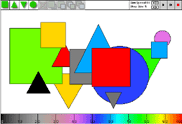 |
|||||
| The Constructivist Modeler | Java Applet | Aug 1999 | ||||
A hybrid of systemic dynamics and avant garde art, The Constructivist Madder is based on flow graphs which can be used to predict things such as the patterns of population change between different species in a food chain. However, it also borrows from a visual language from Russian Constructivist art. Although it is possible to conduct accurate simulations with The Constructivist Modeler, it is optimized for aesthetic creations rather than functional simulations. |
|||||
|
|
Back to top | ||||
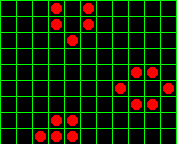 |
|||||
| The Game Of Life | Web Site | Sept 1998 | ||||
John Conway's classic Game of Life simulates such life events as birth, growth, and death. Each cell in the grid is either "alive" or "dead". Using a deceptively simple set of rules, each square influences and is influenced by its neighbors causing them (and being caused by them) to die, survive, or be reborn. Patterns on the game board can remain stationary, oscillate, grow chaotically, or move in a controlled and deliberate manner. |
|||||
|
|
Back to top | ||||